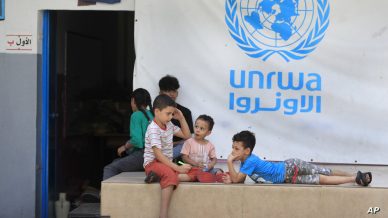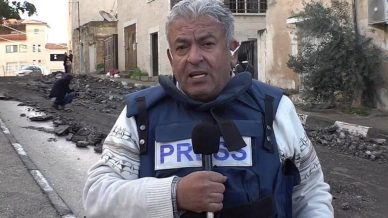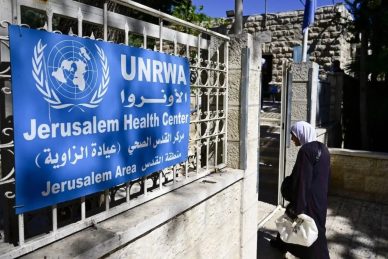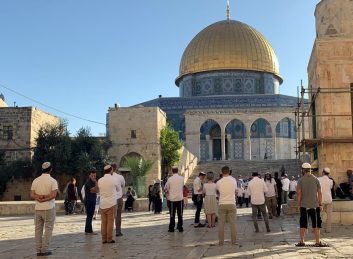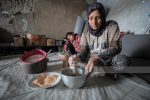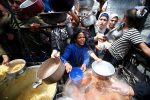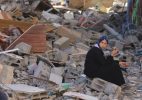OCCUPIED JERUSALEM, (PIC)
In the midst of the struggle waged by the Palestinian people against the Israeli occupation, in rejection of oppression, in pursuit of freedom, and in defense of the holy sites, a group of this people exists in Jerusalem, surrounding Al-Aqsa Mosque with their bodies, earning the honor of guarding it and paying a high price for this honor.
The Israeli occupation authority worked to separate Jerusalem from the rest of the West Bank when it decided in 1980 to annex East Jerusalem and declared “unified Jerusalem” as the capital of the Israeli entity. In the aftermath, the occupation authority escalated its measures against Jerusalemites with the aim of displacing them and replacing them with Zionist settlers coming from various world countries.
The targeting of Jerusalemites took various forms, including deportation, home demolitions, and the prevention of building permits. The people of Jerusalem have not been spared from the brutality of the occupation, which suppresses them, arrests them, and opens fire on them when they express their protests.
According to the Committee of Jerusalemites’ Families of Prisoners, there are more than 550 Jerusalemite prisoners in occupation prisons, including 5 women, 45 minor children, and 52 administrative detainees, in addition to those held in detention centers such as the Moskobiya detention center in Jerusalem pending investigations.
Injury, house arrest, and detention
Tha’ir Bukayrat, a wounded activist from the town of Sur Baher in occupied Jerusalem, embodies the suffering of his generation in his experience with the occupation. He was injured in May 2023 during clashes that occurred in the town, marking the beginning of his journey of suffering.
Tha’ir recalls that on that day, soldiers opened fire on him, hitting him with four bullets that struck his chest, leg, and hand. He was then transported to Hadassah Ein Kerem Hospital and later transferred to the Ramla prison.
The young Jerusalemite states that he spent a month in prison before being released to undergo a year-long house arrest, wearing an electronic bracelet around his ankle to remain under occupation surveillance.
Two weeks ago, he had a court session where the judge sentenced him to four and a half years in prison, in addition to a fine of 36,000 shekels.
The wounded activist says, “I expected a lighter sentence, maybe a year or two, but I was surprised by this harsh verdict. This is the tax paid by every noble and free Jerusalemite in this land.”
His suffering did not end there. He continues to experience constant pain caused by a piece of platinum inserted into his leg during surgery. Additionally, he cannot use his right hand due to the fractures it sustained.
Tha’ir concludes his description of his suffering by saying, “There is a stable bullet in my lung, near the heart, which sometimes causes suffocation, especially during sleep.” It is as if he is describing the state of the occupation that weighs on the chest of his people.
The policy of expulsion
The occupation authorities have employed the policy of expulsion against Jerusalemites to prevent them from accessing Al-Aqsa Mosque, especially during the holy month of Ramadan, by issuing expulsion orders from the Noble Sanctuary of Jerusalem.
This policy has affected not only the employees and visitors of Al-Aqsa Mosque but has also extended to preventing some Jerusalemites from entering the Old City of Jerusalem.
Figures published by the Wadi Hilweh Information Center show the extent to which the occupation has enforced the policy of expulsion. In 2023, there were 1,105 expulsion orders issued in Jerusalem and the Old City. This number is twice the number of expulsion orders issued in 2022, indicating a significant escalation in the implementation of this policy, which aims to expel as many Jerusalemites as possible from Al-Aqsa Mosque and the Old City.
Those who have been expelled describe the occupation’s orders as arbitrary measures not supported by specific charges. Journalist Ahmad Safadi, a Jerusalemite who has been arbitrarily expelled for two years, deprived of entering Al-Aqsa Mosque, especially during the war on Gaza, reaffirmed this observation.
The same situation is suffered by the besieged and expelled Jerusalemites, Hanadi Halawani, who said that she is constantly receiving deportation orders for a renewed period of 6 months.
According to Firas Aljabrini, a lawyer at the Halawa Information Center for Human Rights, the occupation authorities have secret lists of names of the deported individuals, based on arbitrary allegations. They are deported without investigation or trial. He confirmed that the occupation uses modern technological means to identify the individuals intended for deportation.
Recently, the deportation policy has evolved from being related to Al-Aqsa Mosque to include the roads and gates leading to it, then the Old City, and then the streets leading to it. It has further developed to include complete expulsion from the city of Jerusalem.
House demolitions have also increased in occupied Jerusalem, intensifying the violations committed by the Israeli occupation authorities since the beginning of this year, causing additional suffering to the people of Jerusalem. In the past two months alone, the number of demolitions of Jerusalemite homes has reached about 45 buildings and economic facilities, according to the information center of Wadi Hilweh in Silwan.
At the beginning of this month, the occupation municipality carried out a wide-scale demolition campaign in the town of Hizma, northeast of Jerusalem, targeting a multi-story building and economic structures for the benefit of settlement roads. This was preceded by the demolition of an eight-story building in the town of Beit Hanina, north of Jerusalem, owned by the Jerusalemite citizen Fareed Abu Zahriya, on the pretext of lack of permits.
Data from the Media and Documentation Unit in the Jerusalem Governorate indicate that since the beginning of the aggression on Gaza on October 7th of last year, 88 demolition operations have been carried out.
The occupation municipality has introduced a policy aimed at inflicting psychological harm on the owners of houses slated for demolition. They force homeowners to demolish their own homes under the threat of high fines and oblige them to pay demolition fees ranging from $20,000 to $30,000, in addition to forcing them to remove the debris of their homes away from the demolition sites.
Ziad Al-Hamouri, the director of the Jerusalem Center for Social and Economic Rights, said in an interview with Al-Araby Al-Jadeed that the number of houses demolished in the past year has exceeded 140 buildings and structures, with the majority of demolitions occurring in the past two months, representing an increase of more than 60 percent in demolition operations.
According to human rights data, the occupation authorities had notified the demolition of about 200 establishments and buildings by the end of last year, most of which are located in the Old City of Jerusalem.
In contrast to the intensification and acceleration of demolitions against Jerusalemites, the Israeli government has accelerated the construction of Jewish-only settlement neighborhoods in various areas of East Jerusalem, with the approval of more than 20 settlement projects since the start of the war on Gaza.
In this context, researcher Khalil Tafakji, specialized in settlement affairs, points out that the occupation takes advantage of the world’s preoccupation with the war on Gaza to intensify the settlement activities in Jerusalem, explaining that thousands of units are being built in different areas of the occupied city.
According to Tafakji, the occupation seeks to achieve two goals: first, to limit Palestinian urban expansion in neighborhoods and towns adjacent to settlements, and second, to increase the number of settlers in the settlements established on Palestinian lands in occupied Jerusalem.
Despite all the measures taken by the occupation against the people of Jerusalem, they demonstrate their determination to uphold their rights, stand firm on their land, and their readiness to defend their holy places and sanctities, no matter the sacrifices.


